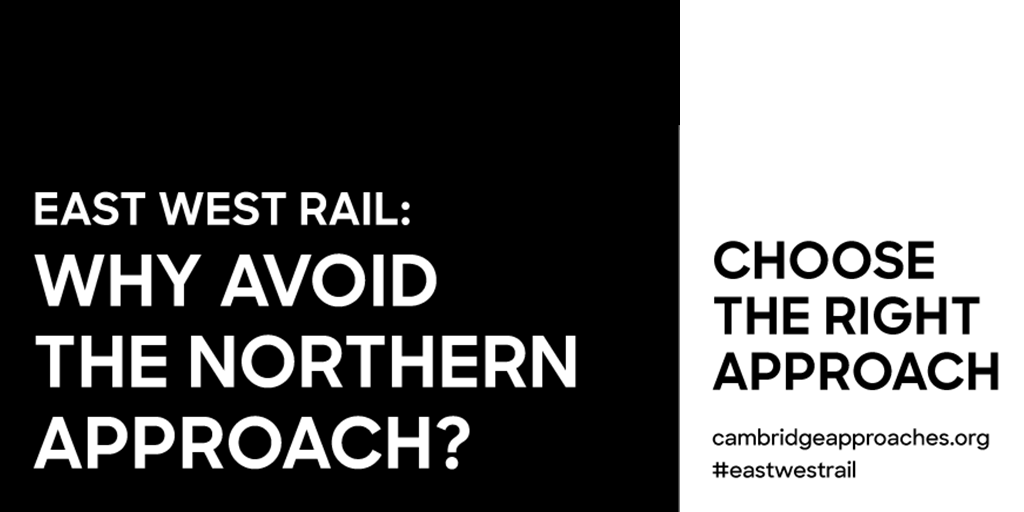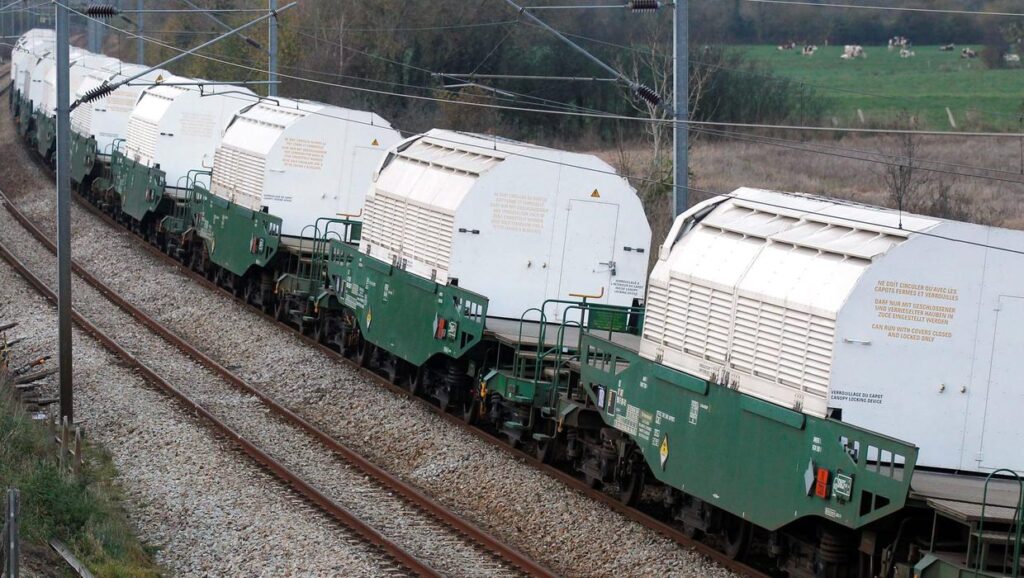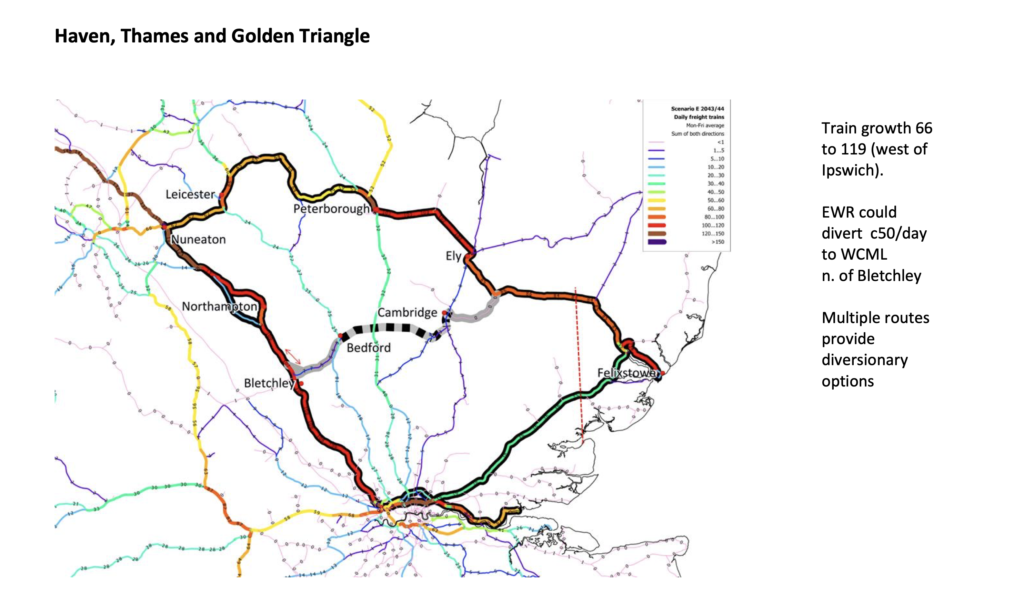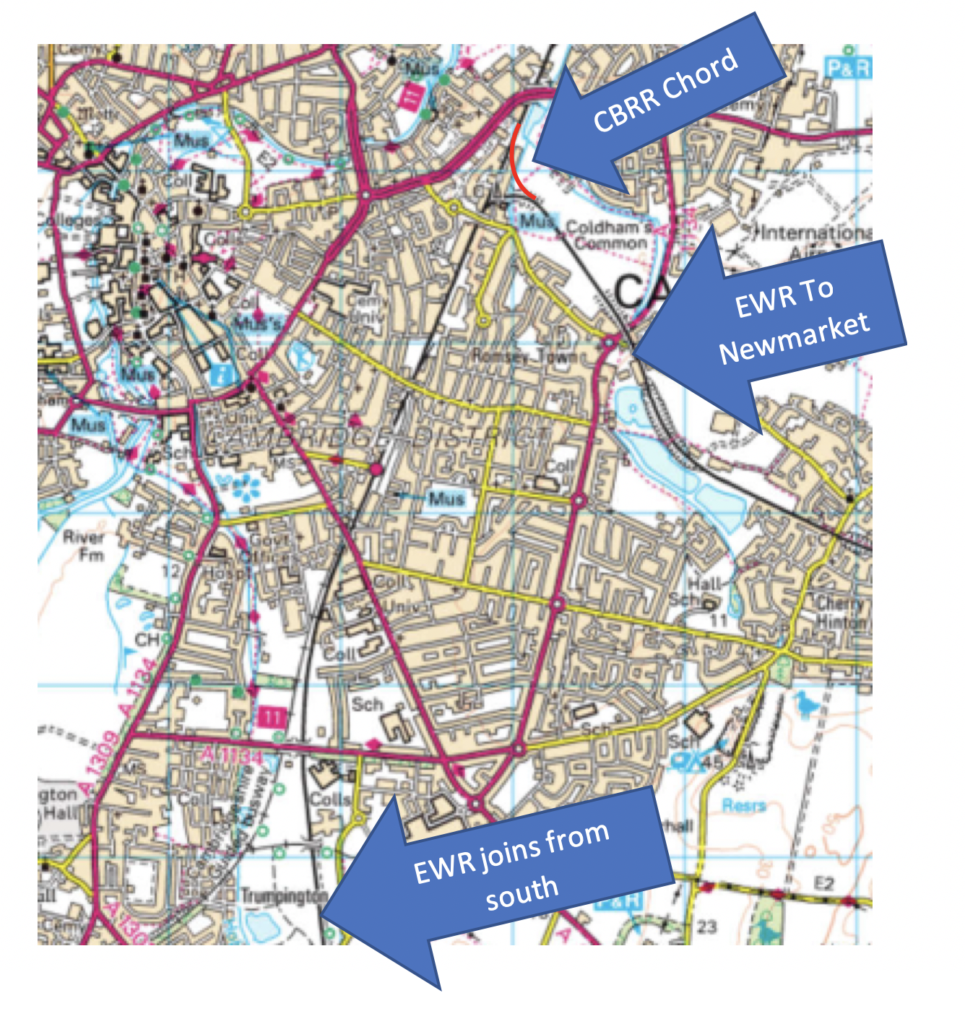
The 2019 EWR Co. central section consultation document on p.20 sets out a list of perceived problems with a northern approach to Cambridge and then the final paragraph states:
“However, we are seeking views through this consultation on whether we are right to focus on routes that approach Cambridge from the south. Of the five route options that are being taken forward for consultation, Routes B and E could alternatively approach Cambridge from the north if new information is provided that suggests this would be better than approaching Cambridge from the south.”
The 2019 EWR Co. consultation form asked for views on five route options all approaching Cambridge from the south. In addition, they asked “Do you agree that EWR Co are right to prioritise route options that approach Cambridge from the south rather than from the north?”
EWR Co. presented statistics on the answer to this leading question in January 2020. A slight majority disagreed (37% vs 35%). This is hardly a sign that EWR Co. have got it right.
We decided to probe a bit further into the consultation responses.
Northern Parishes not Consulted
We found that parishes to the north of Cambridge and the A428 were not even consulted about a northern approach. We know this because the 2020 Public Feedback Report lists the prescribed consultees and does not include these parishes – see Appendix 2a starting on p.8. Furthermore, no maps of the potential northern approach were presented in the consultation. This hardly facilitates EWR Co.’s request for new information about a northern approach to be provided by the consultees. Where is the new information going to come from if you don’t actually consult to the north? and shouldn’t EWR Co. have had a more detailed look at the northern approach themselves and presented the information to the public in an impartial way rather than relying on the public to do their own research? There was certainly no parity here compared with the consultation on the approaches to the south.
However, in a recent letter to Anthony Browne MP, EWR Co. describe the 2019 consultation as follows:
“In answer to your comment around the various requests you have received from constituents for a consultation to be held on whether East West Rail should approach from the south or the north, please let me clarify that this point has been to a full public consultation as part of our first non-statutory consultation held between 28 January and March 11 2019.” (Our emphasis).
Are EWR Co. attempting rewrite history here?
How well were People in the Option E Area Consulted?
There were no consultation meetings held in the Option E area in between Cambourne and Cambridge. Cambridge Approaches can attest that the level of awareness of the consultation among the general public in this area in the second half of 2020 was very low – our leaflet and webinars were the first that many people had heard of it. Shockingly, most of the few that were aware heard about it through survey requests from EWR Co’s agents, Ardent.
Most of the discussion during the consultation centred on routes through Bassingbourn rather than Cambourne.
Maybe it was different in Cambourne and further west, but judging from recent activity in Option E parishes north of Bedford, they were in the dark as well. For example, the village of Ravensden is bang in the line of Option E, but does not appear in the list of statutory consultees. Why is that?
Parish Council Responses
Perhaps the best proxy we have for public opinion on the route options at the time of the 2019 consultation comes from the parish council responses that were sent in.
EWR Co. listed 70 parish councils as prescribed consultees and a year later they published the responses from 41 of these councils here (starting on page 63). Figure 2 shows a map of which parish councils responded. Perhaps one of the more surprising things on the map is the lack of response from Great Shelford and surrounding parishes[1] which EWR Co knew (because they said so on p. 20 of their consultation document) would be affected by any route option chosen. Despite the parish being listed as a prescribed consultee, the parish clerk to Great Shelford PC did not receive a letter notifying the parish council of the consultation.

In the consultation, the parish councils were faced with a choice between route options A to E. This choice involved deciding on at least three issues:
- The route out of Bedford south (A, B, C) or north (D, E)
- Bassingbourn (A, C, D) or Cambourne (B, E) station as the last stop before Cambridge
- Cambridge approached from the south (A, B, C, D, E) or the north (-)
We have been through the response letters sent in by parish councils. We first looked at whether they supported a northern approach into Cambridge or whether they at least thought there should be a proper consultation about it. Then, we counted the parishes that responded but did not express a preference because they (very understandably) felt that the consultation did not provide enough information.
Finally, we counted the parishes preferring a route through Bassingbourn (routes A, C, D) and separately through Cambourne (routes B, E). In doing this, we noted that only one parish east of Cambourne (based on the dotted black line in Figure 2[2]) supported a southern option with a station at Cambourne.
Figure 3 shows the results.

Hardly a resounding endorsement of option E with a southern approach to Cambridge.
The Elephant in the Room
Figure 3 shows that the largest proportion of parish council responses (54%) either expressed a preference for a northern approach to Cambridge or at least felt there should be a proper consultation about it. This was not even a consultation option, but it was the most common response.
That is the elephant in the room which EWR Co. ignored in choosing their preferred route option (and continue to ignore).
They just presented option E as the most popular choice and re-stated their reasons for not following the northern approach in a slightly longer form[3] than they did at the time of the consultation.
Yes, parish councils were influenced by the campaign of CBRR. But that’s because CBRR were making, and continue to make, good arguments for their northern approach to Cambridge.
The next most common response from parishes (17%) was to say that the consultation did not provide enough information to express a preference.
So nearly three quarters of the responses did not support any of the southern options A to E. Shouldn’t that tell EWR Co. that they need to think hard about the next step in the consultation process?
In recent correspondence with EWR Co. we were informed that they intend to present more analysis of the northern approach to Cambridge in their next consultation as they consult on detailed route alignments in the option E area. It seems that they have not listened to the feedback from the parishes at all.
The elephant is still there.
Peter Bungay and William Harrold
[1] Newton, Hauxton and Little Shelford
[2] The logic for this division was that parishes east of Cambourne would be more informed and concerned about the route into Cambridge than those parishes further west.
[3] See §16 of their Preferred Route Option Report 2020






